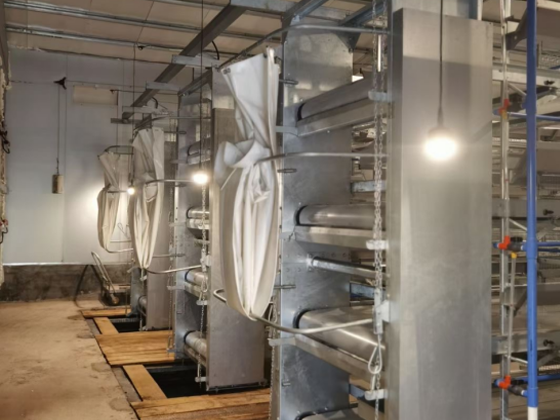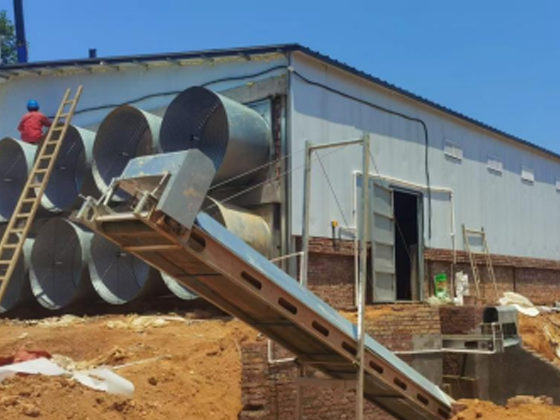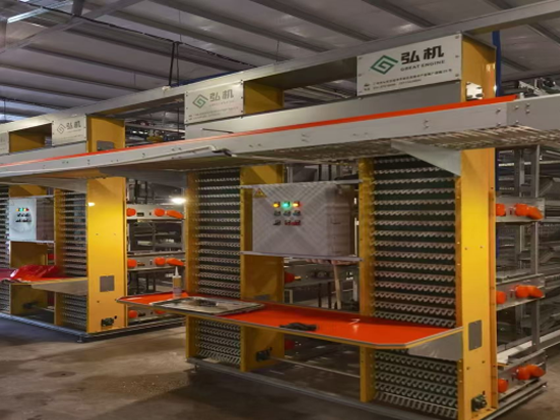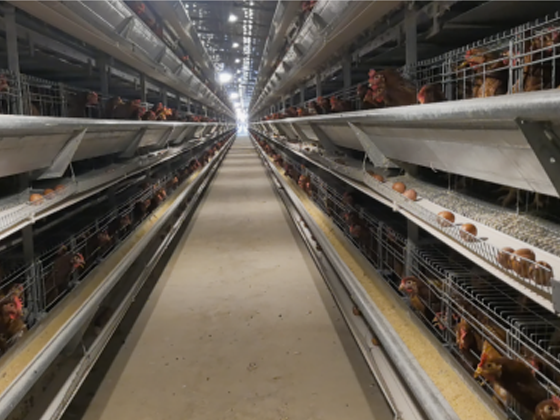-
-
Chicken Equipment
显示更多 -
Duck Equipment
显示更多 -
Steel Structure House
显示更多 -
Pig Equipment
显示更多
-
Indonesia Layer Stacked Cage Breeding System
Release time:
Aug 25,2025
The company aimed to overcome the limitations of traditional free-range layer farming—such as dependence on water resources, climate constraints, and pollution risks—by transitioning to a high-density, intensive cage farming model. However, it faced challenges including low automation, high labor intensity, and elevated egg breakage rates.
Project Background:
The company aimed to overcome the limitations of traditional free-range layer farming—such as dependence on water resources, climate constraints, and pollution risks—by transitioning to a high-density, intensive cage farming model. However, it faced challenges including low automation, high labor intensity, and elevated egg breakage rates.
Core Automated Equipment & Applications:
Five-Tier Stacked Cage System:
Constructed with GuangZhou Great Engine’s hot-dip galvanized materials for corrosion resistance and extended service life.
Equipped with gentle-slope egg grooves that allow eggs to roll out automatically after laying, preventing pecking and trampling.
Fully Automatic Environmental Control System:
Automatically regulates temperature, humidity, ventilation, and lighting inside the house to simulate the optimal natural environment for egg production.
Operates autonomously based on preset parameters without requiring dedicated on-site staff.
Automated Feeding, Watering, and Manure Removal Systems:
Auger-type feed conveying lines deliver precise amounts of feed to each tier’s trough.
Nipple drinking systems ensure clean water supply while minimizing waste.
Automated manure removal systems clear waste daily via conveyors for centralized external processing, maintaining a dry and hygienic indoor environment.
Centralized Egg Collection System:
Eggs are transported via lateral and longitudinal egg conveying lines directly to the grading and packaging workshop, achieving "no-contact egg collection" and significantly reducing breakage and contamination rates.
Results & Benefits:
Doubled Production Efficiency: Only one worker is needed to manage 30,000 layers, increasing labor productivity by more than 10 times.
Significantly Improved Egg Quality: The rate of broken or soiled eggs decreased from approximately 8% in traditional systems to below 2%, with notably higher cleanliness, making the eggs the preferred raw material for local food processing companies.
Eco-Friendly Operation: The farming process is completely isolated from water bodies, eliminating aquaculture-related water pollution and delivering outstanding environmental benefits.


Address: No. 25, Guangyuan Road, High-tech Industrial Park, Economic Development Zone, Conghua District, Guangzhou
Telephone: +86 20-87818896
COOKIES
Our website uses cookies and similar technologies to personalize the advertising shown to you and to help you get the best experience on our website. For more information, see our Privacy & Cookie Policy
COOKIES
Our website uses cookies and similar technologies to personalize the advertising shown to you and to help you get the best experience on our website. For more information, see our Privacy & Cookie Policy
These cookies are necessary for basic functions such as payment. Standard cookies cannot be turned off and do not store any of your information.
These cookies collect information, such as how many people are using our site or which pages are popular, to help us improve the customer experience. Turning these cookies off will mean we can't collect information to improve your experience.
These cookies enable the website to provide enhanced functionality and personalization. They may be set by us or by third-party providers whose services we have added to our pages. If you do not allow these cookies, some or all of these services may not function properly.
These cookies help us understand what you are interested in so that we can show you relevant advertising on other websites. Turning these cookies off will mean we are unable to show you any personalized advertising.
Copyright © 2025 GUANGZHOU GREAT ENGINE POULTRY EOUIPMENT CO..LTD. | Stadt-Unterstation | Powered by www.300.cn
Sorry,当前栏目暂无内容!
您可以查看其他栏目或返回 首页
Sorry,The current column has no content!
You can view other columns or return Home








